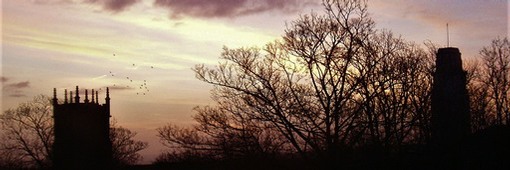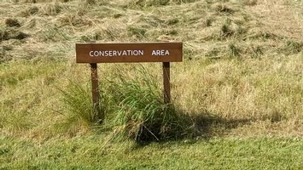

Biodiversity
Action
Plan

Built-up areas and gardens - Actions
We want to encourage those responsible for buildings, green spaces and brownfield sites and the development of urban areas to recognise their value for wildlife and take action accordingly.
We call for ...
- Wildlife requirements to be considered when existing buildings are modified, repaired or demolished and development proposed.
- Development on land that has a limited value to wildlife and not on ecologically valuable sites.
- Development that enhances biodiversity and achieves a significant net gain in biodiversity.
- New builds to include features for wildlife, including bird nesting or bats roosting sites, and green or brown roofs and green walls.
- Landscaping in new developments to promote wildlife through the use of relevant native shrub and tree planting, sustainable drainage and attenuation, and grassland creation, and long term maintenance.
- Wildlife requirements to be considered in gardens, grounds parks and other urban green spaces including in the creation and maintenance of grassland areas, planted beds and borders, tree and shrubs.
- The creation of a network of green corridors throughout urban areas linking green spaces to each other and the wider countryside.
Roles.
Owners and managers of land and buildings: Manage grounds to benefit biodiversity and create areas for wildlife
Developers: enhance biodiversity and produce a net gain in their developments.
Barnsley council as a planning authority:
- assess the need for and opportunities for open green space.
- ensure in relevant cases that developers commit to enhance biodiversity and provide a biodiversity net gain.
Individuals: support wildlife where they live
Voluntary groups and volunteers: help with improvements to built-up areas, parks and public green spaces for wildlife, and help provide records of the wildlife seen there.
What has been done
- Local Plan includes policies on biodiversity and identifies green spaces in urban areas as well as sites of biodiversity interest
- Local Plan sites allocation is based on ecological surveys. 2019
- Local Plan site policies require valuable ecological features to be retained 2019
- Biodiversity Supplementary Planning Documents published including on biodiversity, barn conversions and open spaces requirements. BMBC 2019
- NIA Advice note published. DVGH 2015
- Biodiversity in Schools BBT 2008-16
- Schools projects include NIA, RSPB …
- NIA grass management project BMBC 2012-2015
- North Barnsley wildlife corridors for hedgehogs scheme .
Proposed Actions
- Publicity on features of built-up areas of value for biodiversity, local requirments and legislation
- Advice on gardening and management practices for wildlife
- Identify and promote good practice in gardens, green spaces and school grounds etc
- Projects to create a network of green corridors and spaces in urban areas.
- Continue to identify urban and brownfield sites with conservation value.
- Examine development proposals to ensure biodiversity enhanced & net gain achieved


Built-up Areas Actions